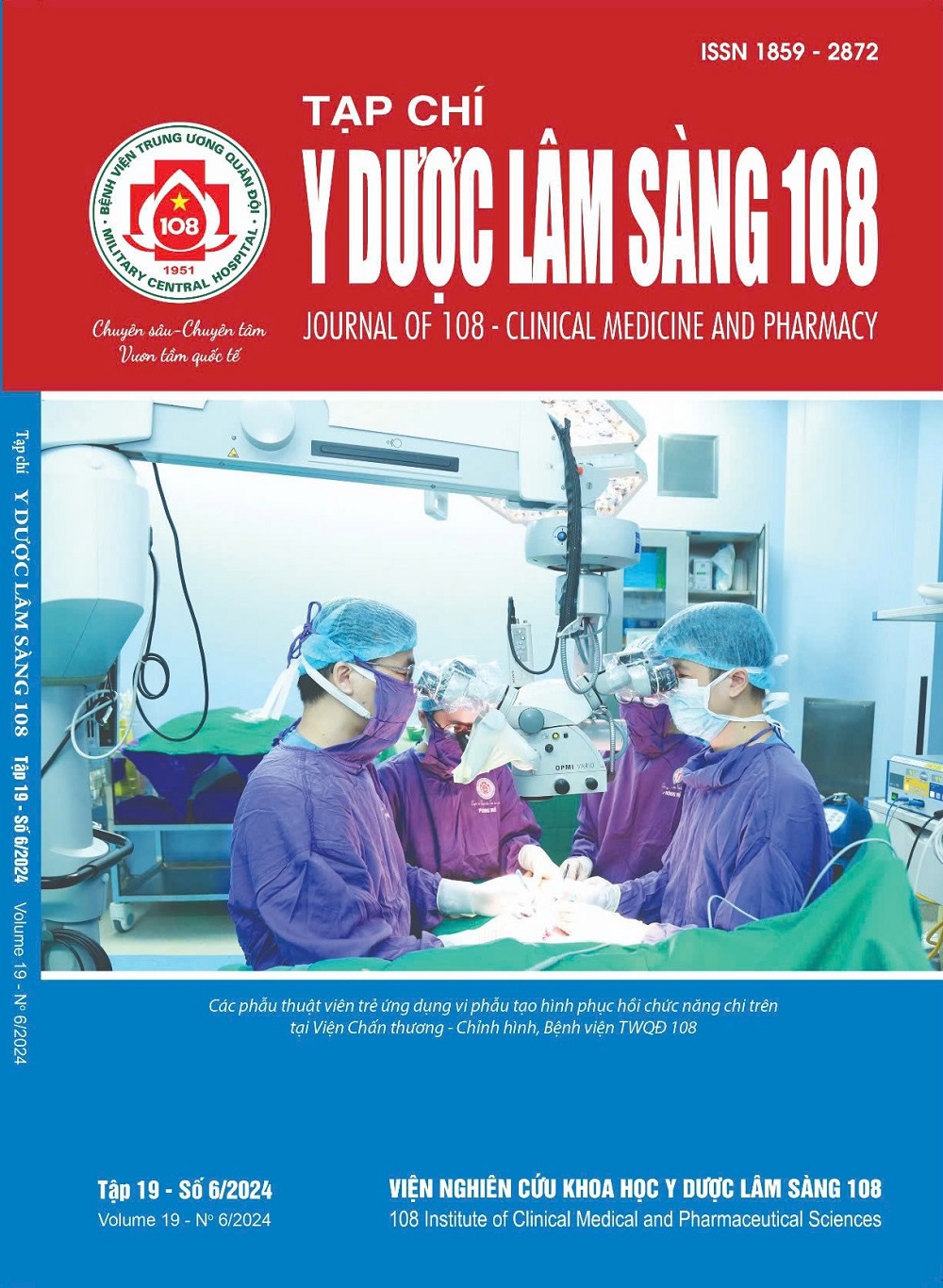Study on some clinical and subclinical characteristics and treatment results of polytrauma patients with liver damage at the Intensive Care Center, 108 Military Central Hospital
Main Article Content
Keywords
Abstract
Objective: To evaluate clinical and subclinical characteristics and treatment results of patients with liver injuries in polytrauma. Subject and method: This study is a retrospective and prospective descriptive analysis of patients with liver injuries in polytrauma who were admitted to the Intensive Care Center, 108 Military Central Hospital, from January 2022 to September 2023. Result: Out of 80 eligible polytrauma patients, the average age was 34.1 ± 13.1 years, with 85% being men. The primary cause of injury was traffic accidents, and the mortality rate was 25%. Combined organ damage included traumatic brain injury and cervical spine injury (53.3%), maxillofacial injury (36.6%), chest injury (76.6%), extremities injury (46.7%), skin and soft tissue damage (23.3%). The most common grades of liver damage were grade III (33%) and grade IV (30%). Mortality rates increased progressively with the grade of liver damage. ISS score, hemodynamic status on admission, and blood levels of creatinine, bilirubin and lactate had prognostic values in mortality, in which lactate concentration had an independent value in predicting mortality. Of the patients, 65% were treated conservatively, with a survival rate of 89.5%. Conclusion: Liver injury in polytrauma is prevalent among young men and is often associated with blunt chest trauma and traumatic brain injury. Severe injuries upon admission, along with subsequent kidney and liver failure are significant predictors of mortality. Conservative treatment of liver injury yields favorable outcomes.
Article Details
References
2. Kozar RA, Crandall M, Shanmuganathan K et al (2018) Organ injury scaling 2018 update: Spleen, liver, and kidney. J Trauma Acute Care Surg 85(6): 1119-1122.
3. Pape HC, Lefering R, Butcher N et al (2014) The definition of polytrauma revisited: An international consensus process and proposal of the new 'Berlin definition. The journal of trauma and acute care surgery 77(5): 780-786.
4. Baker SP, O'Neill B, Haddon W et al (1974) The injury severity score: A method for describing patients with multiple injuries and evaluating emergency care. The Journal of trauma 14(3): 187-196.
5. Coccolini F, Coimbra R, Ordonez C et al (2020) Liver trauma: WSES 2020 guidelines. World Journal of Emergency Surgery 15(1): 24.
6. Barrie J, Jamdar S, Iniguez MF et al (2018) Improved outcomes for hepatic trauma in England and Wales over a decade of trauma and hepatobiliary surgery centralisation. European journal of trauma and emergency surgery: Official publication of the European Trauma Society 44(1): 63-70.
7. Hamed Elbaih A, Ali M, Abozaid A et al (2016) Role of elevated liver transaminase enzymes in diagnosis of liver injury in cases after abdominal trauma. International Surgery Journal 3: 1184-1192.
8. Afifi I, Abayazeed S, El-Menyar A et al (2018) Blunt liver trauma: a descriptive analysis from a level I trauma center. BMC surgery 18(1): 42.
9. Phạm Tiến Biên (2020) Nghiên cứu chẩn đoán và điều trị chấn thương gan tại một số bệnh viện tỉnh miền núi phía Bắc. Luận án tiến sỹ, Viện Nghiên cứu Khoa học Y Dược Lâm sàng 108.
10. Saviano A, Ojetti V, Zanza C et al (2022) Liver Trauma: Management in the Emergency Setting and Medico-Legal Implications. Diagnostics (Basel). 12(6):1456. doi: 10.3390/diagnostics12061456.
11. David Richardson J, Franklin GA, Lukan JK et al (2000) Evolution in the management of hepatic trauma: a 25-year perspective. Annals of surgery, 232(3): 324-330.
 ISSN: 1859 - 2872
ISSN: 1859 - 2872
